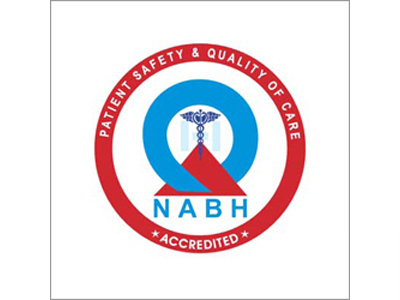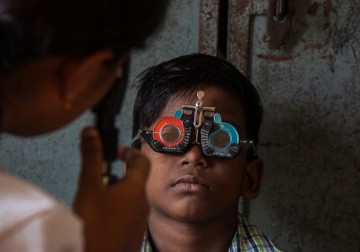A systematic review by Sruthi Chamarty, Pavan Verkicharla and others sifts through extant literature to investigate the link between nutrition and myopia progression. They note that current evidence shows weak association between nutrition and myopia.
Parents of children with myopia are in a deeply vulnerable place. A swirl of factors, largely out of their control, can worsen their child’s refractive error. In a quest for solutions, they try to find means that they can control and manage to improve their child’s outcomes. For most parents, the provision of diet and nutrition are crucial sites of agency: good food, they hope, can lead to better health outcomes for their children. The idea that nutrition is linked to good health is reasonable and holds out across a variety of development milestones among children. Similarly, does nutrition impact myopia development and progression?
Malnutrition can stunt growth, while a child’s body can blossom with a healthy diet. It may not be unreasonable to assume a similar association between an eye’s axial length and diet. A variety of animal studies too seem to indicate that diet-derived hormones can impact human ocular development, and therefore, myopia. Some studies have found broad differences in the macro and micronutrient profile of children with myopia when compared to those without. Over the years, a variety of studies have probed this idea from a range of dietary perspectives and research strategies. Yet, no dietary intervention has emerged as a testable and replicable strategy to control myopia progression. A systematic review of the extant literature linking nutrition and refractive error may well be the solution, clearing away poor results and offering a way forward.
A systematic review in the Optometry and Vision Science by Sruthi Chamarty, Pavan Verkicharla and others at LVPEI’s Myopia Research Lab does just that. The authors qualitatively assessed data from 27 cross-sectional, cohort, retrospective, or interventional studies that report on nutrition and myopia. About 11 studies used a variety of methods to record nutrient intake, such as questionnaires, food-diaries, and interviews among others. Eight studies measured nutrient concentration in serum or hair, while five did both. A majority were non-interventional studies that compared these parameters between myopic and non-myopic cohorts, with most accounting for externalities like sun exposure or ethnicity. Three interventional studies measured the difference in the spherical equivalent of refraction (SER) between the two groups, while two of them included axial length also.
The review did not find any strong consistency in the numerous dietary and nutrient elements tracked across the 24 noninterventional studies. While the three interventional studies did better, ultimately, in two of the studies, the change in axial length between the groups with and without myopia was clinically irrelevant. However, the review remains open to diet’s potential secondary influence on myopia, perhaps through growth hormone pathways or micronutrients and other dietary elements.
‘Nutrition is a complex space and it is clear that today’s science is unable to tease out any direct link between myopia and diet. However, we need to be open to this possibility. The Myopia research lab at LVPEI will remain focused on this question and we hope to have clearer answers in the near future,’ says Pavan Verkicharla, head of LVPEI’s Myopia research Lab and the corresponding author for this review.
Citation
Chamarty, Sruthi MSOpt1; Gupta, Satish K. BSOpt1; Dhakal, Rohit BSOpt1,2; Verkicharla, Pavan K. PhD1,2∗. Is There Any Association between Nutrition and Myopia? A Systematic Review. Optometry and Vision Science 100(7):p 475-485, July 2023. | DOI: 10.1097/OPX.0000000000002035
Photo credit: Now I see clearly; by Gino Surya, #LoveYourEyes Photo Competition; CC BY 2.0.



